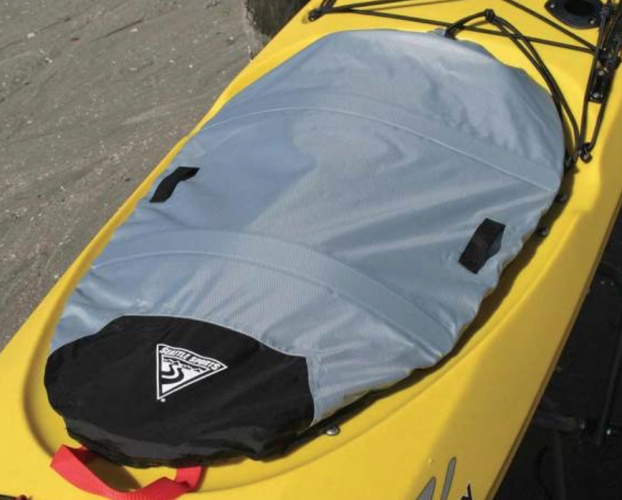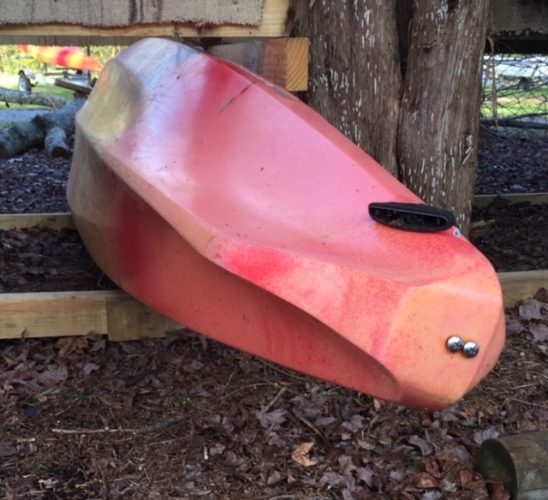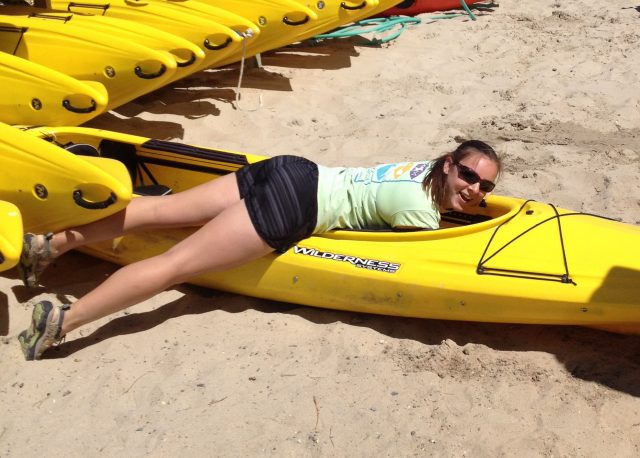In our household exists two opposite maintenance ideologies: Mitch believes in it and I don’t. That’s not exactly true. I think regular maintenance is great as long as someone else (Mitch) does it. The wonderful thing about kayaks, especially plastic ones, is that for most of the year they require little to no maintenance. No engines to flush, oil to change, wiper fluid to fill, or batteries to replace. However, it’s a good idea to pamper your kayak a little before tucking it in for its long winter nap, so it is happy and perky when it comes out of hibernation, ready for a summer of exploration.
Drain and dry your kayak:
Although our winters here in the mid-Atlantic are mild, inevitably we will have some sub-freezing nights and days. Any water left inside the hull or in compartments will contract-expand, contract, expand over and over. Think of what that can do to asphalt and concrete roads. It’s not good for plastic kayaks either.
It is nearly impossible to get all the water out of sit-on-top kayaks, especially if they don’t have hatches. But try to get as much out as possible. If you have hatches or if you have an open-cockpit kayak, a sponge is the best way to suck up those last few drops.
Remove leaves:
A leaf left in or on a kayak will forever be remembered by the tannin imprint it leaves behind.
Moving parts:
If your kayak has a rudder or skeg work some dry lubricant through the mechanism. Salt water residue will eventually still anything that is supposed to pivot, drop, retract, and zip.
Cover your cockpit:
Wrens love the cozy space between my back band and rear bulkhead. It breaks my heart to remove their soft, pine needle nests. A cockpit cover would most likely end this drama for all involved. A cover should also keep out destructive mice, raccoons, snakes, and any other winter squatters. If you don’t want to invest in a cover made especially for your model, you can use a bungee cord and sturdy material. Breathable is better otherwise any residual moisture can cause mold.

Do not store upright on hull:
Plastic kayaks are great for so many reasons, but their rigidity is not one of them. If you leave them sitting on their hulls, they will warp. Storing them on their side is the better option.

Skin care:
If you don’t have space in your garage and will have to store your kayak outside, give it a dose of sunscreen for the winter. 303 Protectant is great stuff and easy to apply. If you’re lucky enough to have a garage with room for your toys, save the 303 for the spring.

Tilt and protect:
If you must store your kayak outside for the winter, try to pick a spot where it is out of direct sunlight, away from heat sources, off the ground, and not under eaves where water could pool on it. Tilt the cockpit down so it won’t collect precipitation. Any cloth parts of the kayak—seats, thigh pads, etc—show the most wear so either remove them or cover them.
A pretty easy maintenance list. I hope Mitch finishes soon!

